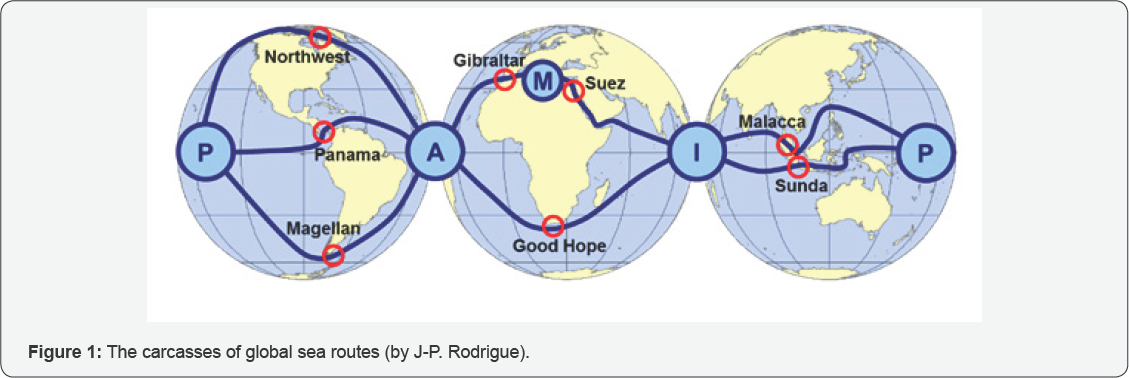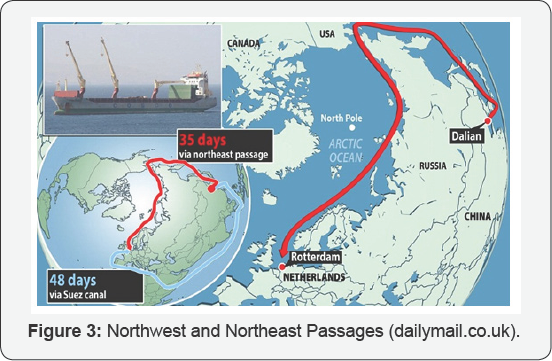The Northern Sea Passage: A New Trade Direction or an Old Geographic Term?
Alexander Kuznetsov*
Department of Ports and Cargo Terminals, University of Maritime and Inland Shipping, Russia
Submission: December 17, 2017; Published: February 08, 2018
*Corresponding author: Alexander Kuznetsov, Professor of the Department of Ports and Cargo Terminals, University of Maritime and Inland Shipping, Russia, Email: Thunderl950@yandex.ru
How to cite this article: Alexander Kuznetsov. The Northern Sea Passage: A New Trade Direction or an Old Geographic Term?. Oceanogr Fish Open Access J. 2018; 6(2): 555681. DOI: 10.19080/OFOAJ.2018.06.555681
Short Communication
The world is certainly a very small place. In ancient times we guessed it, now we know it for sure. The development of the civilization manifested itself in relevant development of the international trade, so relatively soon (by historical scale) the mankind - sorry, the humanityl-discovered all the oceans of the Earth and the routs to sail between them (Figure 1).

Today the rate of the world trade makes those routes too narrow for the cargo volumes needed to transport. The climate change, proving once more time that nothing could be only bad or only good, caused the melting of the Arctic ice, thus inviting us to use a shorter and no so overcrowded route, the Northeast Passage. The Russian name for it is the Northern Sea Route (Figure 2).

From the first look, this new trade direction is very attractive (Figure 3). Since we already agreed, that nothing could be only good, there are some annoying "buts". First, the Northern Sea Route is not a single trajectory in the Silence of Arctic; it is a collection of routes connecting two ends of Eurasia (Figure 4).


First, the Northern Sea Route is not a single trajectory in the Silence of Arctic; it is a collection of routes connecting two ends of Eurasia (Figure 4). Low-latitudinal routes limited the permissible draft to very disappointing levels, the high- latitudinal ones raise this plank a bit, but in return introduce more severe ice conditions. The icebreaker's escort and a higher ice class ruin the economics of the shipping, especially with regard to the biggest container vessels operating on traditional strings. The ice, however it melts, still reduce the operational speed of the vessels to 14 knots or even less. Coupled with the unpredictability of the schedule, it makes the advantages of the route to shrink.
There are not only division of the routes along the Northern Passage into high-latitudinal and low-latitudinal. The Northern Sea Route is composed of the Eastern and Western parts (Figure 4). The Western part is relatively easy to sail due to better navigational conditions and relatively more developed port infrastructure. The Eastern part, which should be sailed in order to make it the international transit route, is still more an adventure than the commercial route.
The power of current terrestrial civilization makes nearly everything possible, but the expedition to Mars today looks more realistic, that establishing of the steady transport corridor along the Northern East Passage. We have to wait until all the ice melts; the ocean rises and makes the draft deeper. By the geological time scale, it could happen soon, as we already seen.






























